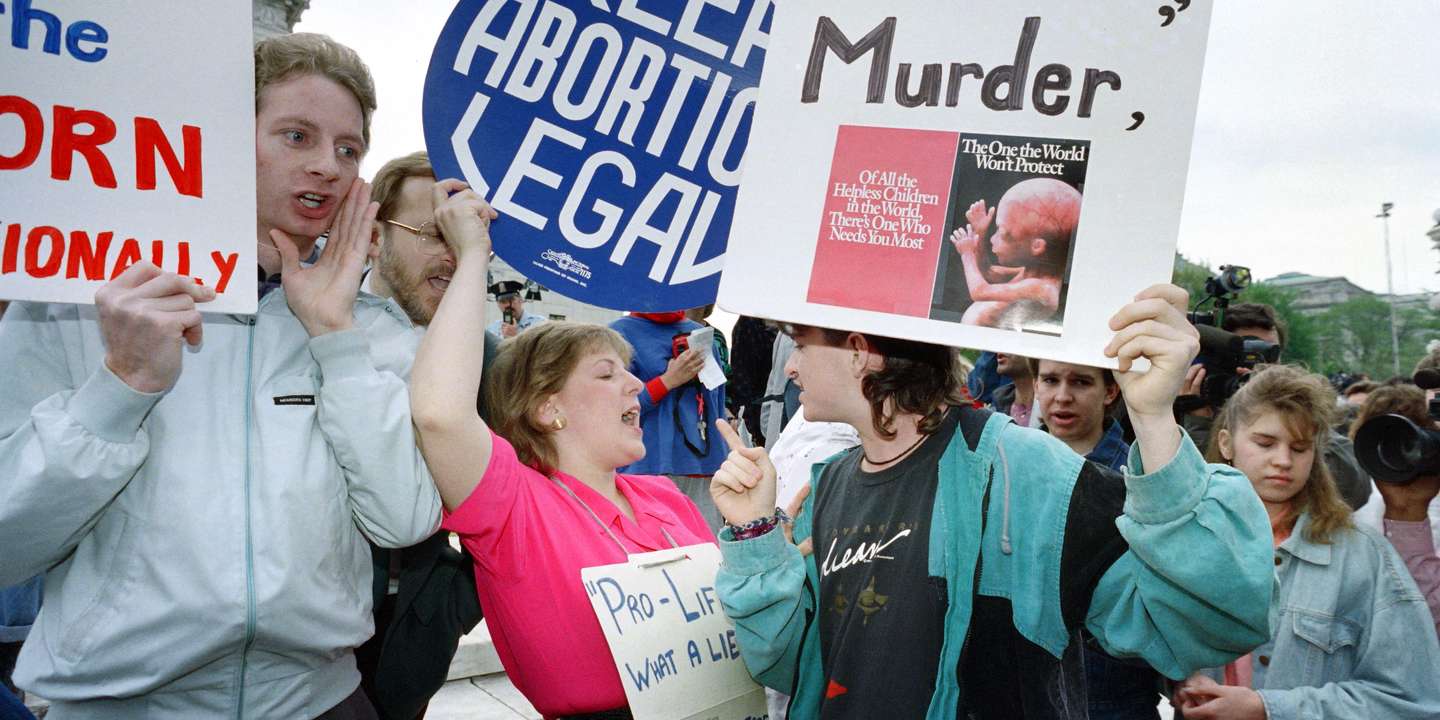It is, without doubt, the most well-known judgment of the United States Supreme Court. On January 22, 1973, the promulgation of the Roe judgment vs. Wade granted American women the right to abortion nationwide.
A right that the highest court in the country is preparing to question, according to a draft decision published by Politico, which had the effect of a bomb in Washington. If this cancellation is indeed retained in July, the United States will return to the situation in force before 1973, where each State had the power to prohibit or authorize abortion.
When was the first abortion law in the United States?
It was in Connecticut that the first law on voluntary termination of pregnancy was enacted in the United States, in 1821. It opposed abortion by taking all types of « poison », for health reasons first of all. However, during the nineteenthand century, abortion is tolerated by American society. But in March 1873, the Comstock Act was passed by the Senate. This federal law punishes « the trade in and circulation of obscene literature and articles of immoral use » and prohibits the publication of information on reproduction, tools and drugs used for abortion or contraception. In 1880, under pressure from part of the medical profession, the practice of abortion was made criminal, unless the life of the mother was at stake.
Nearly a century later, fourteen states are reforming and four others are repealing their restrictive abortion laws. In 1967, the Supreme Court of California came out in favor of the freedom to abort. In 1970, the states of New York, Washington, Hawaii and Alaska repealed their laws prohibiting abortion. They authorize it in particular when the pregnancy results from a rape or an incest. In addition, the provisions of the Comstock Act relating to contraception are repealed.
What happened on January 22, 1973?
It was in 1973 that the country as a whole experienced a historic turning point. On January 22, the Supreme Court of the United States decides, by its decision Roe vs. Wade, that the right to privacy, guaranteed by the US Constitution, applies to abortion.
But in this case, it all started three years earlier. Norma McCorvey, a 21-year-old single mother and pregnant for the third time, wants to have an abortion, which is prohibited in several states, including Texas, where the young woman lives. She turned to lawyers Sarah Weddington and Linda Coffee, who on behalf of several pregnant women were challenging Texas legislation, which made abortion a crime. Mand Coffee then filed a complaint with the Dallas court in 1970, on behalf of Jane Roe, the pseudonym chosen by Norma McCorvey.
Jane Roe’s defense is based on the lack of precision of Texas anti-abortion laws and their contradictions with several articles of the United States Constitution. Henry Wade, Dallas prosecutor and representative of the State of Texas in this case, wins the trial in federal court. But Jane Roe and her lawyers appealed and the highest court in the country took up the case.
After having heard the parties twice, the Supreme Court waited for the presidential election of November 1972, and the re-election of Republican Richard Nixon, to deliver its judgment, which was adopted by seven votes to two. Already recognizing the « the sensitive and emotional nature of the abortion debate, the starkly opposed views, even among physicians, and the deep and absolute convictions the subject inspires », the High Court ultimately struck down Texas abortion laws.
What does the judgment say and what are its limits?
The decision, which has set precedent in a majority of American states where similar laws were in force, stipulates that “the right to respect for private life, present in the 14and constitutional amendment (…) is broad enough to apply to a woman’s decision whether or not to terminate her pregnancy..
« A Texas-type law that makes abortion a crime except when the life of the mother is in danger, regardless of stage of pregnancy or other interests at stake, violates 14and Amendment of the Constitution »according to the decision.
Jurisprudence thus establishes the legal framework for access to abortion. This is authorized up to the threshold of viability, the stage from which a fetus can survive outside the uterus, ie approximately 22 to 24 weeks of pregnancy.
But the Court agreed with the trial court’s view that the right to respect for private life was not, “however, not absolute”. « At a certain stage, the interests of the state and the protection of health, medical criteria and prenatal life become dominant », pointed out Judge Harry Blackmun, who wrote the text on behalf of the nine “wise men”.
The high court thus gave reason to Jane Roe, but rejected the appeals, qualified as inadmissible, of the doctor James Hallford and the couple John and Mary Doe, who attacked for their part the legislation on abortion in Georgia. Roe v. Wade was accompanied by the decision Doe v. Bolton, which authorizes each State to add restrictions to the right to abortion, when the pregnancy is advanced. The constitutional right to abortion was subsequently confirmed by other decisions.
